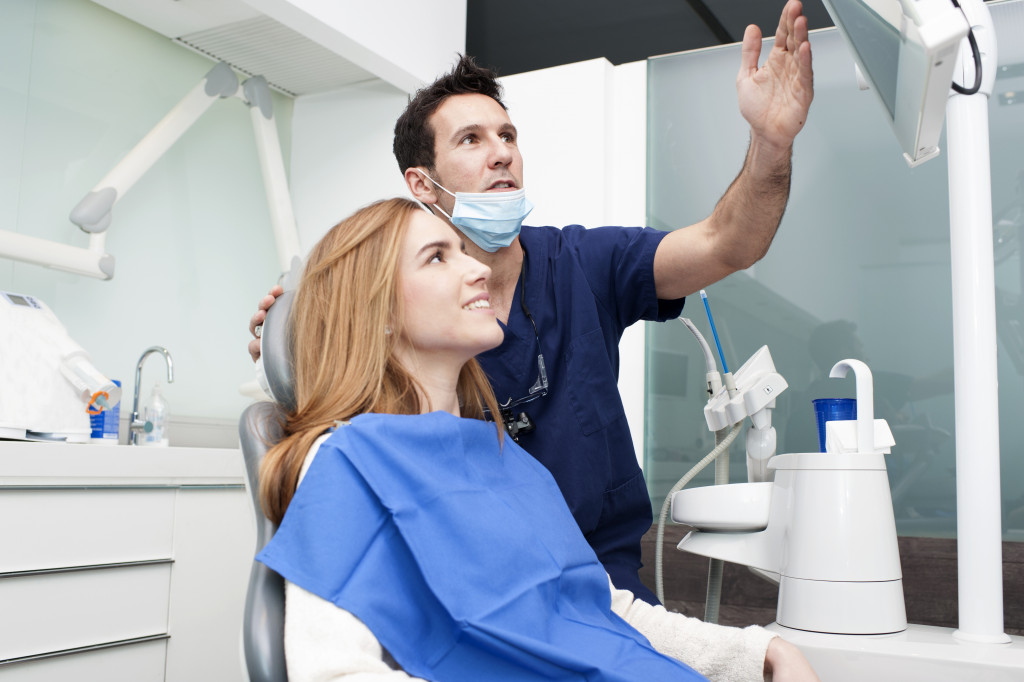- Technology has significantly impacted the field of dentistry, making it easier for dentists to provide better customer experiences and patient care.
- Digital x-rays help reduce radiation exposure while allowing for more accurate diagnosis and treatment planning.
- Laser dentistry can be used to treat various dental issues with minimal discomfort.
- Implant surgery is now easier and faster with the help of computer-guided technology.
Technology has changed many aspects of our lives, including the way dentists provide dental care. This blog post will explore how technology is helping dentists create a better customer experience and improve patient care. It will also look at some of the technological advancements that are making it easier for dentists to diagnose and treat various dental issues.
Digital X-Rays
One of the most important tools used by dentists is the x-ray machine. Traditional x-rays require large film plates and chemicals to develop the images. Digital x-rays are now available, which means that all images can be viewed on a computer monitor within seconds. This helps reduce radiation exposure for patients, as well as makes diagnosis much easier and faster for dentists.
Digital x-rays also made it possible for dentists to store and share patient images with colleagues or other specialists, quickly and securely. This makes it easier for dentists to collaborate with one another on the best course of treatment for their patients.
Laser Dentistry
Lasers have been used in dentistry since 1994, and they’re now being extensively used in many treatments, such as tooth whitening and cavity removal. Lasers allow dentists to remove decay quickly with minimal discomfort for patients. They also make it easier to detect early stages of decay before any major damage occurs.
In addition, laser dentistry can also be used to treat soft-tissue diseases, such as periodontal disease and oral ulcers. By targeting the affected area with a laser, dentists can reduce pain and clear up infection quickly.
Implant Surgery

Dental implants are one of the most popular procedures in modern dentistry, allowing patients with missing teeth or severe decay to replace their teeth with artificial ones that look and feel like real teeth. Implants are surgically inserted into a person’s jawbone using advanced technology that allows for precise placement of the implant without damaging surrounding tissue. This minimizes recovery time while ensuring that the implant looks natural when it’s placed in a person’s mouth.
And because of the constant advancements in the technology of implant surgery, dentists can now offer affordable full-arch dental implants, which means that more people will be able to have access to this life-changing procedure.
The Advantages of Dental Technology
As technology advances, so too does the field of dentistry. In recent years, there has been a significant shift towards using technology in dental services and treatments. From 3D imaging to robotic surgery, the use of technology in dentistry offers many advantages for both patients and providers.
Proper Diagnosis
The use of technology in dentistry can help to ensure proper diagnosis of dental conditions. For example, digital x-rays are more precise than traditional film x-rays, providing better images for diagnosis and treatment planning. Digital x-rays also require less radiation exposure than traditional film x-rays, making them safer for both patients and providers.
Improved Comfort
Technology can also improve comfort levels during certain exams and treatments. Intraoral cameras allow dentists to see inside the patient’s mouth without having to put their hands inside their mouths.
This helps reduce discomfort during exams as well as reduce the amount of time required for examinations and treatments. In addition, devices such as laser drills are quieter than traditional drills, helping to reduce anxiety levels when undergoing certain procedures such as cavity fillings or root canals.
Increased Efficiency
Lastly, using technology in dentistry helps increase efficiency by streamlining processes such as scheduling appointments or ordering lab work. Electronic health records also allow for easy access to patient records which can help speed up diagnosing and treatment planning processes.
Improved Accuracy
Technology also helps improve the accuracy of treatments, as computer-guided technologies can measure and plan dental treatments with greater precision. This helps ensure that the dental work being performed is accurate and effective while minimizing risk to both patients and providers.
Technology has revolutionized the field of dentistry, making it easier than ever before for patients to receive quality dental care while minimizing pain and discomfort associated with traditional treatments. From digital x-rays to laser dentistry and implant surgery, technology has opened up new possibilities for providing better customer experiences at dental offices across the country. Thanks to these advances in technology, customers can rest assured knowing that their dentist is utilizing cutting edge tools designed to make their visit more enjoyable and effective than ever before!













